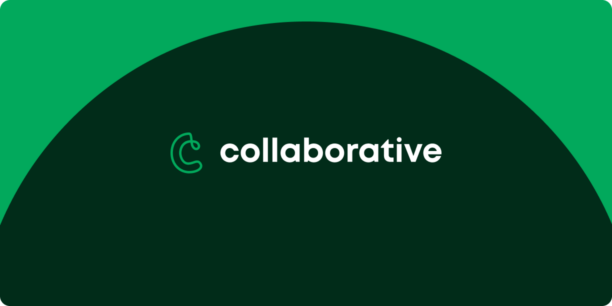8 Tips for Effective Employee Onboarding at Your Nonprofit

Hiring new employees takes time and resources, yet 50% of senior outside hires turnover within the first 18 months and 50% of hourly workers leave new jobs within the first 120 days. The first 90 days are critical for effectively onboarding a new hire to your organization.
Effective employee onboarding needs to:
- Ensure new hires know what’s expected of them
- Introduce new hires to other people within your nonprofit
- Integrate new hires into your organizational culture
Below, we’ll cover eight aspects you should consider when onboarding new hires to your nonprofit, including special considerations for remote hires. With an intentional design, your onboarding process can make a strong first impression and reduce costly turnover and burnout.
1. Think Long Term
Onboarding a new employee is different from hosting a new-hire orientation.
An orientation is a one-time, short-term event. It could be a daylong presentation from human resources or a half-day overview from a project manager.
Onboarding is an ongoing process with the goal of fully integrating a new employee into both their tasks and the organizational culture. It’s designed to prepare each employee for long-term success and retention.
Create a plan for a full year of onboarding. The first month will have the most activity, including orientation, introductions, weekly check-ins, and other methods to get your new hire acquainted with your workplace. After the first month, the intensity of the onboarding process will lessen over time. Toward the end of the year, you may be checking in with the employee informally once per month to see how things are going.
2. Prepare New Hires for Day One
First-day nerves are common. Help your new hire feel comfortable and reassured by sending them an email prior to their first day that includes a thorough itinerary. You can also attach or link to any resources that might be helpful for them, such as a map of your building, any door codes they’ll need, and some general marketing collateral to orient them to your nonprofit.
Preparing your new hires for day one demonstrates that you’re organized and care about their time and well-being. Those kinds of characteristics help keep employees around year after year.
3. Create an Employee Handbook
It’s nice to have a one-stop resource for new hires to turn to for questions throughout their first week and beyond. Attach a copy of your employee handbook to your day one preparation email to start getting them familiar with your policies and procedures.
Some items to add to your employee handbook include:
- List of frequently asked questions
- List of team members, along with their contact information and a few fun facts
- Your nonprofit’s mission, vision, values, and basic history
- Notes on your workplace culture and typical dress code
- Technology cheat sheets
- Human resources information on any required paperwork, available benefits, or other administrative needs
Make sure to have a process for periodically reviewing and updating your employee handbook. You can redistribute it electronically to all of your employees once per year to make sure both new hires and veteran employees have the most recent resources.
4. Designate a Buddy
Pair new hires with a peer-level buddy who can help move them through their first day and continue to be a quick point of contact for small questions that arise.
Having a buddy can help new hires feel less alone during their first-day jitters. It also facilitates important bonds between teammates that can improve collaborative projects as they get started.
5. Make Personal Introductions
You want to make sure your new hire feels welcomed and that other employees are aware they’ve started work at your nonprofit. Making personal introductions is critical to folding a new employee into your nonprofit family.
Your new hire’s buddy can introduce them to people around the office informally when giving a tour. You’ll also want to make sure that you introduce and welcome new hires in any staff meetings.
Once you’ve introduced your new hire to your main staff, also schedule time to make larger introductions to board members and other stakeholders.
6. Set Short- and Medium-Term Goals
The first few months at a new job can feel overwhelming, especially if it’s unclear what’s expected of the new hire. Help new employees see where they fit in by working with them during their first week to set short- and medium-term goals.
Short-term goals can focus on integrating them into the work culture and getting all of their accounts set up. Medium-term goals can move into project work to give them a better sense of the tasks they’re expected to complete over time.
Goals can keep your new hires focused and engaged with your mission.
7. Establish a Feedback Loop 
Oftentimes, workplaces will wait until annual reviews to give feedback. However, this approach can miss the opportunity to identify and address issues early before they impact new hire morale or employee retention.
Create a process where supervisors and new hires can offer feedback to each other on an ongoing basis to get ahead of any bumps along the way.
8. Make Special Considerations for Remote Onboarding
The COVID-19 pandemic ushered in an era of increased remote work. With this comes some special considerations for new hire onboarding, both for those who will be fully remote and those who may begin returning to the office or starting a hybrid schedule.
- Focus on clear communication. While communication is always key, it’s particularly critical in remote work environments. Be clear and consistent with your communications so new hires don’t feel left out or confused on what they should be doing. You can use tools like Grammarly to help with grammar and tone in your messages.
- Facilitate meaningful introductions. Making introductions also takes more creativity and intentional effort. Use video conferencing software to make sure people can put a face to a name. You can also find tools like Donut for Slack that facilitate informal digital one-on-one meet and greets.
- Connect them with peers. Having an assigned buddy is especially helpful in remote environments, as that contact can also help facilitate introductions and familiarize the new hire with how your teams communicate over your digital platforms.
When considering hybrid schedules or whether employees should return to the office if they were originally hired remotely, take a look at job responsibilities. Determine which tasks can be done remotely and which might be better for in-person gatherings.
Also look at what times and days you have regularly scheduled team meetings. These considerations can inform your strategy for returning to the workplace, or optimizing your remote work processes.
For more remote tips, check out our post on how Classy pivoted to remote hiring.
Onboard New Hires Effectively to Reduce Turnover and Burnout
Your employees are one of your greatest assets. Save time and money by effectively onboarding them from the start. With positive introductions and the right resources, they’ll be ready to integrate into your nonprofit’s workplace culture with ease.
Posted in Nonprofit development

A Leader’s Guide to Motivating Employees


